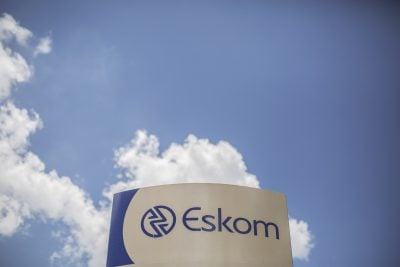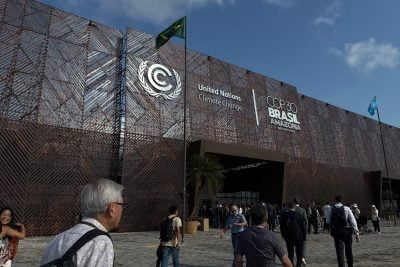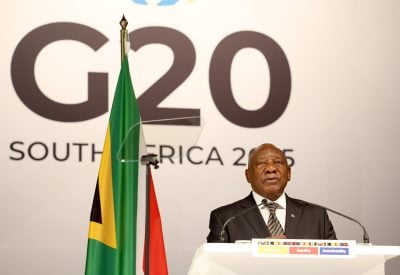This article was produced with the support of Ministry of Energy and Petroleum of the Islamic Republic of Mauritania
Nearly two years after the massive Greater Tortue Ahmeyim (GTA) Floating Production Storage and Offloading (FPSO) facility – a building designed for hydrocarbons produced at sea – embarked on its journey from China, weaving through Singapore on its way to Senegal and Mauritania, a striking image landed in the office of the energy and petroleum minister. BP had just sent over a photo capturing the first gas flare.
For Mauritania and Senegal, this was a symbol of triumph. After nearly a decade since the discovery of this large gas field in 2015, GTA had reached a moment of welcome relief and anticipation for what lies ahead.
Beginning in the first quarter of 2025, the $4.8bn Greater Tortue Ahmeyim liquefied natural gas platform is set to spring into action. Helmed by British oil powerhouse BP and US-based Kosmos Energy, this ambitious project will bring one of Africa’s most anticipated gas ventures to life, tapping into vast offshore reserves that promise to reshape the region’s energy landscape. The Greater Tortue Ahmeyim field boasts an impressive 1,400bn cubic metres of gas reserves spread across a vast 33,000 square kilometres. In its first phase, set to run through 2025, the project will yield 2.5m tonnes per year, with plans to double production in a second phase. Looking further ahead, production is projected to reach 10m tonnes annually in its third phase.
BP estimates that these rich reserves have the capacity to fuel production for an impressive 30 to 50 years, powering growth and helping meet global demand well into the future. Geologists predict there will be much more gas to follow the GTA field.
“The coastal basin here is relatively young, with deposits from the Permian, Triassic, and Jurassic periods,” says Chemsdine Sow Deina, Mauritania’s director general of petroleum and low carbon hydrogen.
“Salt domes formed in the Triassic, and substantial carbonate layers appeared during the Jurassic, mainly in the basin’s eastern part. It covers nearly 200,000 square kilometres, including about 100,000 offshore and we’ve drilled 90 wells so far, leading to 12 oil and gas discoveries.”
The GTA gas field, straddling the maritime border between Mauritania and Senegal, sits in depths of 2,800 metres, with each nation holding an equal share of its estimated 25 to 50 trillion cubic feet (TcF) of resources.
On the Mauritanian side, the field lies within Block C8 of the coastal basin, managed by BP alongside partners Kosmos and Mauritania’s Société Mauritanienne des Hydrocarbures (SMH). Across the Senegalese border, BP collaborates with Kosmos and Senegal’s national oil company, PETROSEN, to bring the field’s immense potential to fruition.
Notably, GTA’s Phase 1 infrastructure, at 2,850 metres, marks the deepest subsea development on the African continent – a technological feat that has earned it the designation of National Project of Strategic Importance from the presidents of both Mauritania and Senegal.
Closer to the coast, around 70 kilometres from Nouakchott in shallower depths of 300 metres, another offshore field holds between 1.2 TcF and 2 TcF of gas, complemented by an oil basin with an estimated 200m barrels.
SMH is currently evaluating development options to align with the priorities of Mauritania’s National Gas Master Plan, ensuring that each resource is leveraged in accordance with national goals.
Amid geopolitical turbulence and Europe’s intensified search for new energy sources, Mauritania’s gas reserves arrive at a critical moment. The GTA project’s liquefied natural gas will largely be directed toward exports, with a share allocated to meet local energy and industrial needs, offering much-needed relief for European markets under strain. This energy windfall marks a turning point for Mauritania, a vast nation twice the size of France but with a modest population of 4.9m, according to the World Bank. Until now, Mauritania’s economy has hinged on two primary sectors: mining – dominated by iron, gold, and copper – which accounts for over half of its exports, and the rich fisheries along its coastlines, which contribute the remaining share. Now, with this new gas development, Mauritania stands on the brink of an era that could uplift its economy.
Despite recent progress, challenges have been, and continue to be, navigated as the GTA project advances. In a key development, the International Chamber of Commerce recently ruled in BP’s favour, solidifying its role as the exclusive buyer of liquefied natural gas (LNG) from the GTA project, a decision that concluded a dispute with Kosmos Energy.
This ruling restricts Kosmos from selling LNG cargos to third-party buyers for the entirety of the sales agreement’s term, potentially extending until 2033.
As the operator and major stakeholder, UK-based BP holds a 56% interest in GTA and has secured a 20-year agreement to purchase 2.5m tonnes of LNG annually from the project.
For Mauritania, the journey to fully develop the region poses further challenges. “Infrastructure development is one of our biggest hurdles to overcome, especially in the Taoudenni Basin, the largest intra-atomic basin in Africa,” explains Deina. “This area is relatively underexplored, covering 500,000 square kilometres with just five wells drilled so far. Roads and logistics are essential for further exploration, and this area, in particular, needs infrastructural support.”
To boost exploration efforts, Nouakchott has partnered with energy data and intelligence firm TGS, signing an agreement with Mauritania’s Ministry of Energy and Petroleum to “integrate, enhance, and licence” an extensive range of subsurface data. This collaboration allows TGS to expand its data coverage across Mauritania’s onshore and offshore territories, providing critical insights that support exploration and development efforts.
According to a company release, this expanded dataset includes ten narrow-azimuth input 3D seismic surveys processed by ION in 2022 with 3D pre-stack depth migration, creating a fully merged and migrated volume spanning 19,092 square kilometres. Additionally, approximately 84,000 square kilometres of 3D seismic data from offshore relinquishments, as well as offshore and onshore wells, complements around 20,000 line kilometres of 2D seismic data from the Taoudeni Basin.
The contract with TGS is intended to supply high-quality seismic data to help de-risk exploration, particularly in frontier regions. “Having data is crucial for attracting international companies, especially during the energy transition, where financial caution has increased. The data will show our hydrocarbon potential and position Mauritania as an attractive prospect,” says Deina.
Capacity building remains a focal area alongside data expansion. Each production-sharing contract includes a capacity-building budget, funded by the operator, to support local expertise. “For instance, TGS trains several engineers each year in the UK, and local institutions like the École Supérieure Polytechnique and a new technical school for petroleum and gas support workforce development for engineers and technicians,” adds Deina.
With a positive medium-term outlook, the country’s growth is projected to reach around 7.6% in 2025-2026 (4.8% per capita), according to the World Bank. The launch of gas production in early 2025 is expected to fuel this growth, providing the fiscal space needed to finance development initiatives and advance social protection reforms.
In the capital of Nouakchott, new embassies are steadily appearing, expanding Mauritania’s global presence. For a nation whose people have often remained on the edges of regional growth and development, projects like GTA are igniting hopes of economic transformation and long-term prosperity.
“We have two prolific basins; one is already recognised globally for discoveries like GTA and BirAllah, while the Taoudenni Basin remains largely untapped,” says Deina.
“Additionally, Mauritania’s vast solar and wind resources position us as a global leader in green hydrogen. We have modern, investment-friendly laws, political stability, and immense potential across oil, gas, hydrogen, and mining sectors. We aim to form win-win partnerships that leverage this potential responsibly and effectively.”

 Sign in with Google
Sign in with Google 



